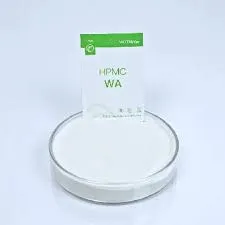
Oct . 17, 2024 17:05 Back to list
Solubility of Hydroxyethyl Cellulose in Ethanol and Its Practical Implications
Hydroxyethyl Cellulose Solubility in Ethanol An Overview
Hydroxyethyl cellulose (HEC) is a water-soluble polymer derived from cellulose, extensively utilized in various industries, including pharmaceuticals, cosmetics, and food processing. Its unique properties, such as thickening and stabilizing capacities, make it a valuable ingredient in many formulations. However, understanding the solubility of HEC in various solvents, particularly ethanol, is crucial for optimizing its application in these sectors.
Chemical Structure and Characteristics
HEC is produced by the etherification of cellulose with ethylene oxide. This chemical modification introduces hydroxyethyl groups into the cellulose chain, enhancing its solubility in water and altering its properties. The degree of substitution, which indicates the average number of hydroxyethyl groups attached to each glucose unit in the cellulose molecule, directly affects the solubility and viscosity of HEC solutions.
Solubility Behavior
While HEC is predominantly soluble in water, its solubility in organic solvents like ethanol is limited. The primary reason for this low solubility is the nature of HEC’s polar hydroxyl groups, which favor interactions with water molecules. In ethanol, the solvation environment changes due to the solvent's different polarity and hydrogen bonding capabilities. Consequently, HEC may exhibit partial solubility in ethanol, depending on concentration, temperature, and ethanol purity.
At lower concentrations, HEC can be dispersed in ethanol, but the dissolution is not complete. This behavior is attributed to the competition between ethanol and water for hydrogen bonding with the hydroxyl groups on the HEC chains. Higher concentrations of HEC may lead to phase separation, where the polymer settles as a gel-like mass rather than forming a homogenous solution. This observed phenomenon is significant as it influences the processing and stability of formulations that involve HEC.
Factors Affecting Solubility
hydroxyethyl cellulose solubility in ethanol

Several factors can impact the solubility of HEC in ethanol
1. Molecular Weight Higher molecular weight HEC tends to have decreased solubility in ethanol compared to lower molecular weight variants. The viscosity and entanglement of longer chains can hinder their ability to interact effectively with ethanol molecules.
2. Temperature Increasing the temperature generally enhances the solubility of HEC in solvents. Warmer temperatures can provide the necessary energy for HEC chains to overcome intermolecular forces, allowing for better dispersion in ethanol.
3. Ethanol Concentration The presence of water in ethanol solutions can significantly enhance HEC's solubility. Ethanol-water mixtures may facilitate a certain degree of interaction that allows HEC to dissolve more effectively than in pure ethanol.
4. Additives The inclusion of salts or co-solvents can modulate the solubility of HEC. Specific ionic or nonionic additives may disrupt hydrogen bonding and alter solvent properties, improving HEC solubility in ethanol.
Practical Implications
Understanding the solubility of HEC in ethanol is especially relevant for formulation scientists and engineers who are developing products in which HEC plays a critical role as a thickener, stabilizer, or film-former. For applications that involve alcohol-based systems, such as certain cosmetic products and pharmaceuticals, knowing how to manipulate the solubility of HEC can lead to improved performance and product stability.
In conclusion, while hydroxyethyl cellulose demonstrates limited solubility in ethanol, careful consideration of molecular weight, temperature, solvent mixtures, and additives can enhance its performance in ethanol-containing formulations. Continued research into the solubility properties of HEC offers potential pathways for novel applications across diverse industries, ensuring the polymer remains a versatile component in modern formulations.
-
tile-bonding-additives-for-stronger-bonds
NewsAug.22,2025
-
construction-grade-rdp-for-wholesale-needs
NewsAug.22,2025
-
trusted-wholesale-hec-partners
NewsAug.22,2025
-
hec-solutions-for-industrial-excellence
NewsAug.22,2025
-
construction-additives-need-hpmc-essentials
NewsAug.22,2025
-
hpmc-versatile-cellulose-ether-for-industries
NewsAug.22,2025







